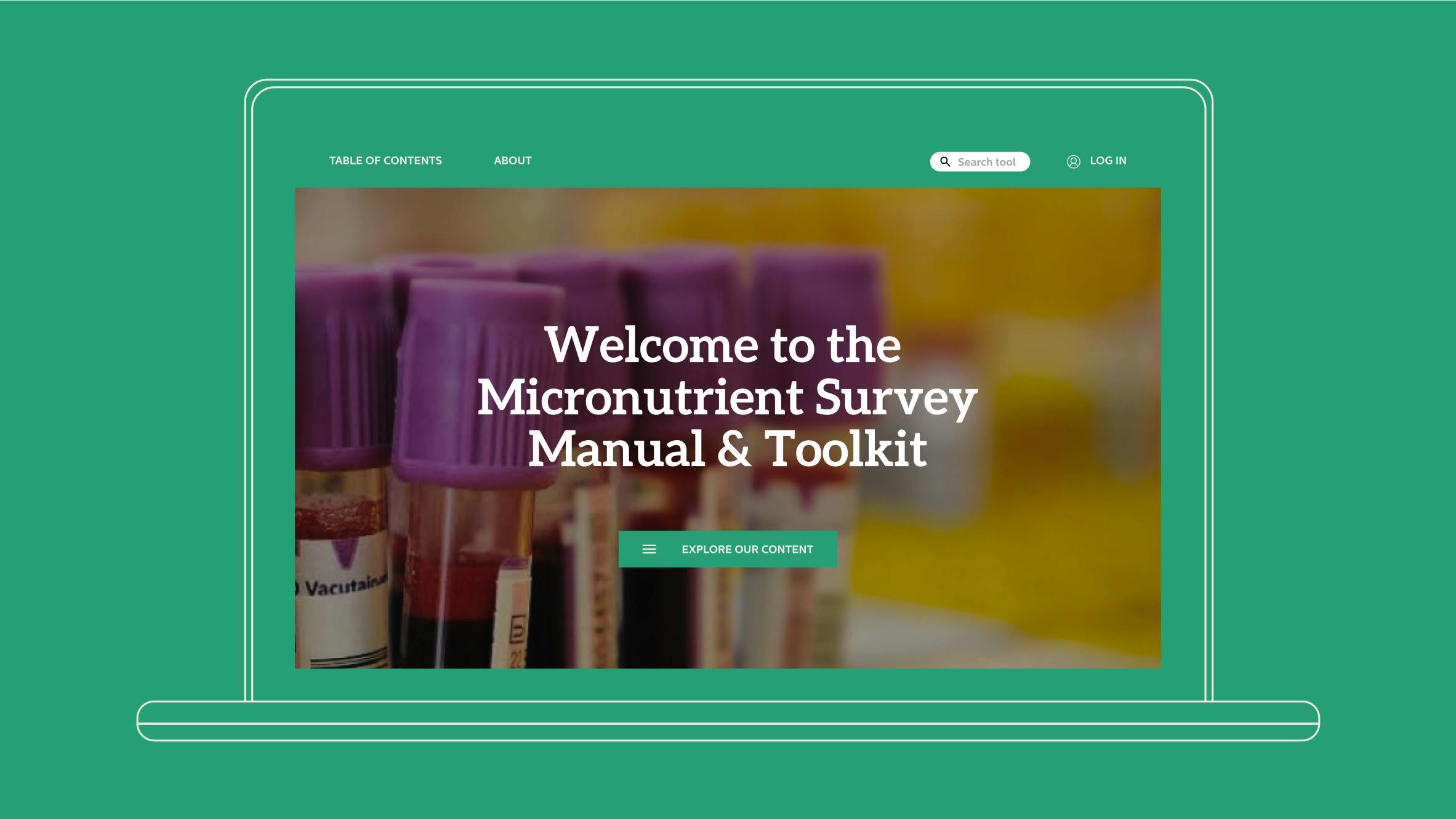How can we modernize the tools used to manage global dangerous goods transport and handling by air?
Background
Every year, more than 1.25 million dangerous goods are transported by air. Air cargo growth is predicted at 4.9% per year year over the next five years, and the number of dangerous goods shipments will likewise rise significantly. With so many dangerous goods being shipped by air, it is imperative that safety regulations be followed precisely.
A “Technical Instructions” manual is used by all air operators and shippers globally to ensure compliance with regulations governing the transport of dangerous goods. In 2003, the International Civil Aviation Organization (ICAO) digitized this manual using MS-Access. The database, named DAGWOOD (DAngerous Goods Web-Oriented Official Database), renders the pertinent information and regulations for all dangerous goods permitted to be transported by air.
Høst partnered with ICAO to modernize this data management system, as the current software had become obsolete. Høst further worked with ICAO to explore and expand possible uses for the data, both in the context of aviation and health and safety.
Objectives
Maintain a database of records
Facilitate the translation
Generate printouts
Propose changes to the database

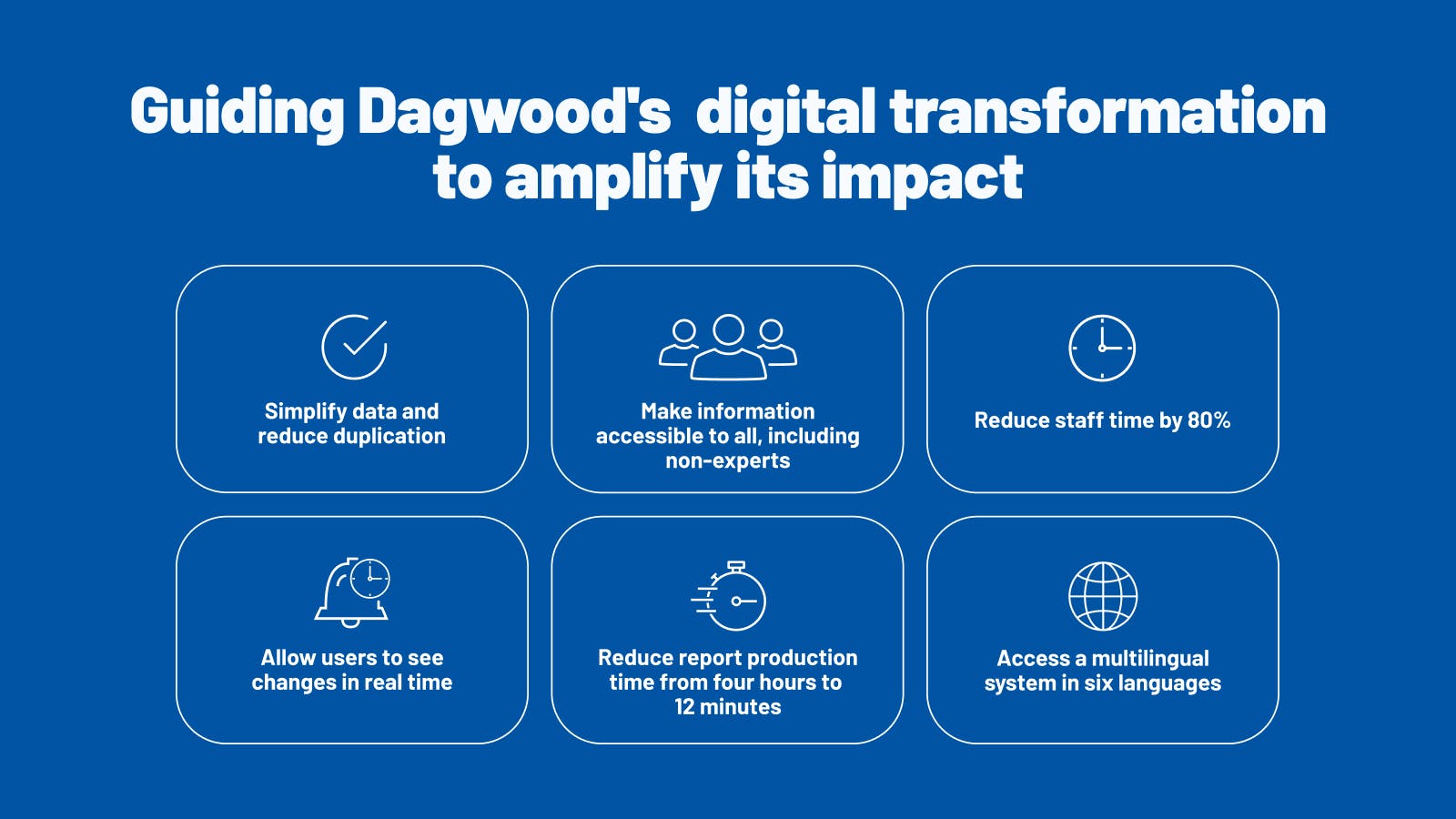
How did we work through the challenge?
Our approach recognized the need to thoroughly understand how dangerous goods regulations are coded. Our team studied the relationships between different categories of goods to understand the components, dependencies, and exceptions to rules. Due to the number of goods and the number of exceptions, our team worked closely with ICAO’s Dangerous Goods team to understand and document how the regulations are coded in order to build a platform that would simplify the data, reduce human error, and succinctly display information even for non-experts.
Audit of the legacy system
Prior to the legacy MS Access system, the regulations were manually organized on a word processor and, before that, via typewriter. The MS Access system reduced required staff time to manage the regulations by over 90%. Our goal, 20 years after the MS system launched, was to reduce staff time by a further 90%.
Our audit of the system observed that as new rules and functionalities were added over time, MS Access did not provide an easy way of integrating those changes to existing entries. This led to more complex instructions for packing dangerous items, the duplication of entries to manage exceptions, and an overall handling process that was difficult to manage. Identifying these intricacies and potential pitfalls allowed us to account for them and embed risk mitigation within the new digital architecture.
Design and planning
The previous system required administrators to have a deep understanding of the database to manage the information. Our approach was to simplify data entry and make it easier to understand the different parts of the regulations. As the old system did not have an easy way to visualize amendments to the Technical Instructions manual, Høst designed the new version of DAGWOOD to allow users to see the changes in real time.
In addition to the core requirement of generating the tables of instructions, we developed several new workflows to streamline work across teams:
- Language Sections: Workflow to manage translation of the instructions in English, Chinese, French, Russian, and Spanish as necessary.
- Dangerous Goods Section: Workflow for the team to manage version and edition history, and edits in the system.
- Dangerous Goods Panel: Workflow for the Dangerous Goods Panel to review additions or amendments to existing regulations for approval.
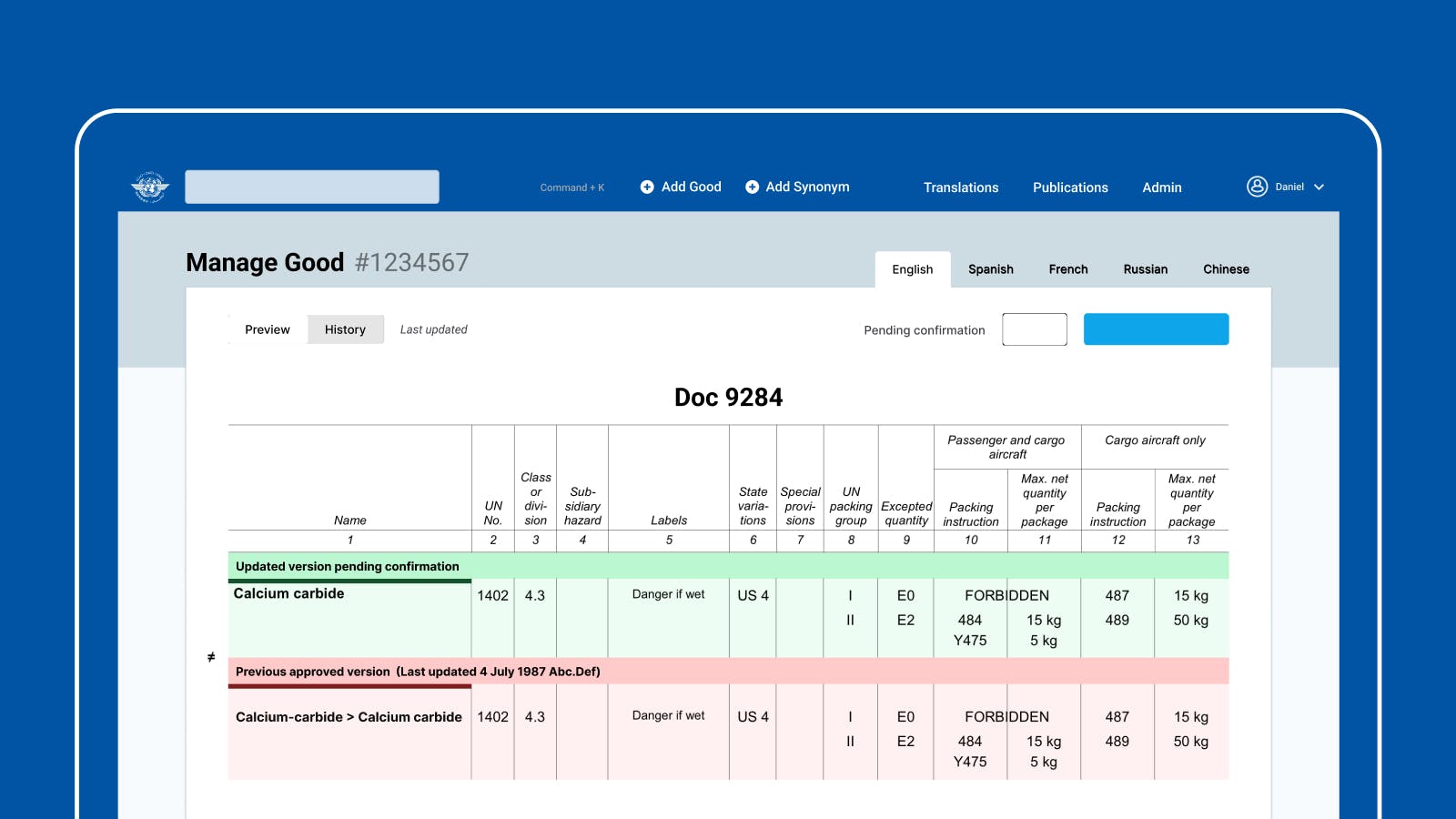
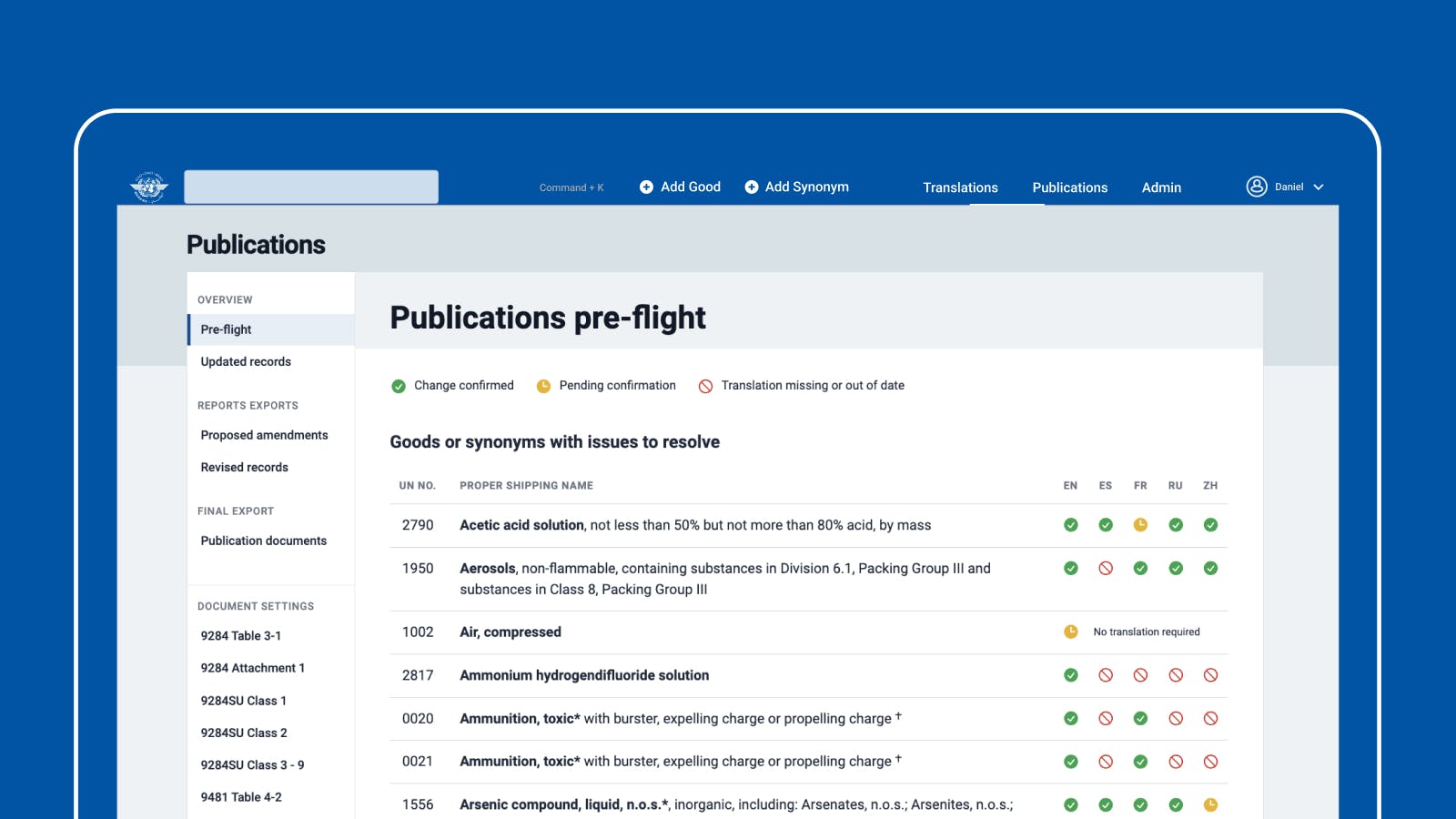
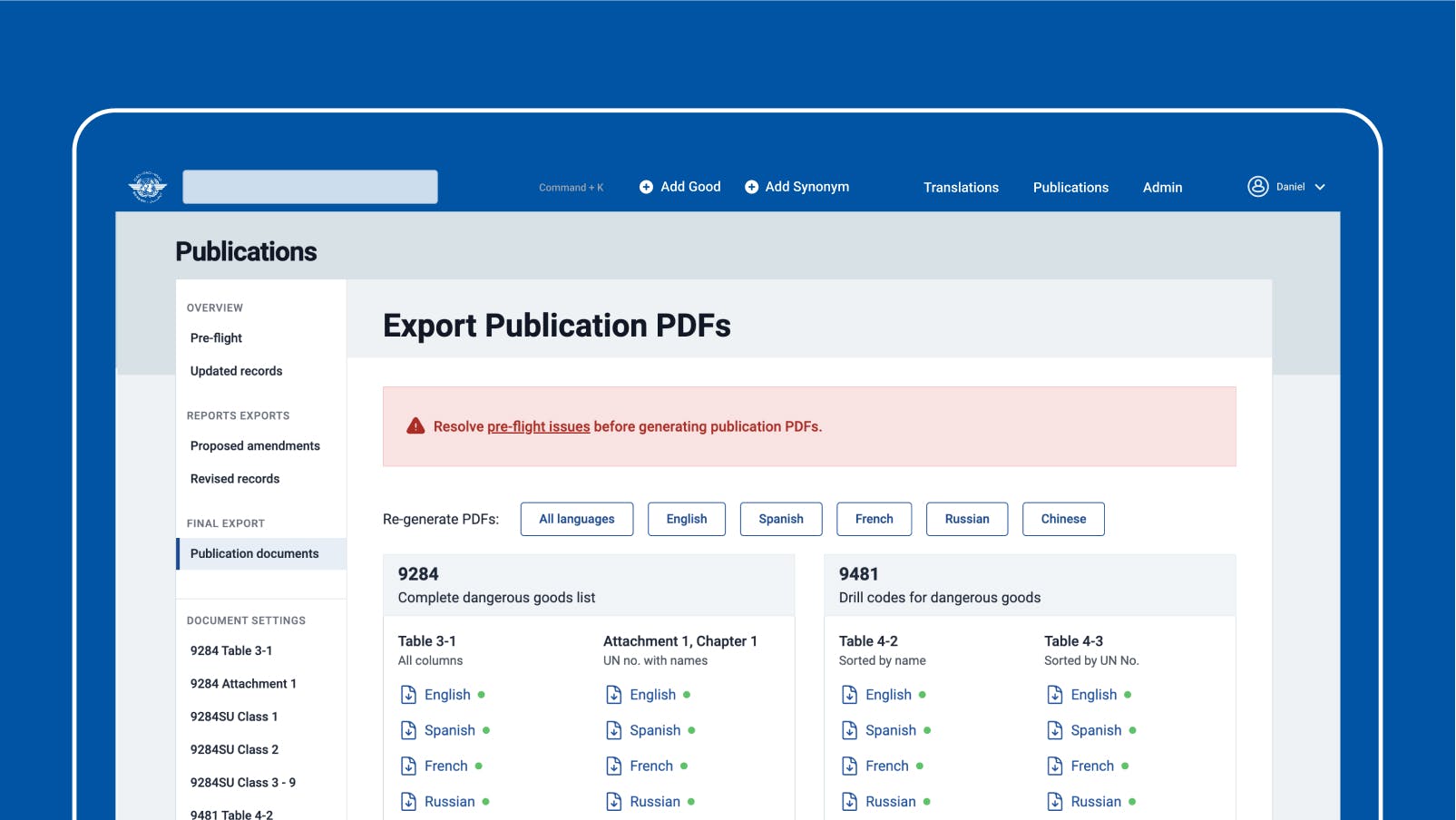
Development and testing
ICAO has strict requirements for developing enterprise technologies. We worked with ICAO’s Information Security team to analyze the risks of the technology and meet their requirements. The complexity of the Technical Instructions meant that we frequently had to test the outputs of the system with ICAO’s experts. By meeting weekly and continuously testing, we were able to identify areas for improvement to the structure of the data and help streamline the logic to create the report outputs.
One key outcome of our method was increased efficiency for report production. We generated over 4,000 pages of documents and parsed over 2,900 entries during testing and development. As a result, we were able to improve report generation time from up to 4 hours in the old system to just under 12 minutes.
Multilingual by default
Translations of the Technical Instructions were a core requirement of the platform and one of the most labor-intensive parts of the process. The workflow of translation work was not automated and required continuous back and forth between the teams in Language & Publications and Dangerous Goods, largely over email.
Recognizing how crucial accurate translations are in the handling of dangerous goods, we incorporated a translation task within the new DAGWOOD framework that would be verified and cross-checked by both the Dangerous Goods and Language & Publication teams for validity and consistency. This made the new DAGWOOD system automatically multilingual and further reduced processing times. We delivered a week long workshop for the staff to introduce the new system, which allowed us to further improve user experience, cut down on processing time and ensure compliance with ICAO’s Language & Publication requirements.
Documentation and quality control
ICAO’s strategy with DAGWOOD is to continually improve and update the system, meaning that all documentation had to be easily updatable and always be up to date. In response, we developed a digital manual of the platform outlining everything from user permissions, data relationships, and definitions to help onboard future users. The team can continually update the documentation with new rules, updates to the system, and lessons learned.
A large amount of data had to be migrated onto the system, though not all the data was structured in a way that allowed for easy data migration; much required a heavy degree of cleaning. Because of the critical safety implications in air transport, the Language Section underwent an end-to-end review of all the instructions in all languages.
ICAO’s Information Security team ran its full suite of technology testing and sign-offs which cleared the system for use by the team.


